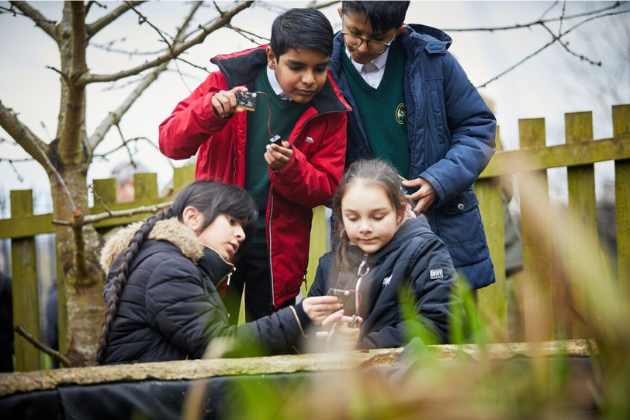Exploring the great outdoors: enhancing learning with micro:bits
22 April 2024

Picture the scene: a busy school playground where pupils are playing, laughing, and having fun. Amidst this excitement, a group of learners are taking part in an activity to gather data on their movement.
This is exactly what my class was doing last summer. Students wanted to answer the question: what is the average number of steps taken in the playground during break and lunch times? It was part of an investigation about the human body and health which involved children using their micro:bit devices alongside laptops to create pedometers. The children wanted a way to accurately track how many steps they took in the playground.
How the students approached the task
Pupils worked in groups over a sequence of six lessons focusing on developing computational thinking skills such as the use of inputs, sensors, and variables within their code. The immediacy in allowing the children to test out their code on their micro:bit and make any changes was important.
At its core, the micro:bit pedometer operated on a simple principle: count steps and display data. But behind this seemingly straightforward concept lay a wealth of learning opportunities including:
- Using block programming concepts to code each device, the children developed critical thinking as they designed algorithms to track steps accurately.
- Through experimentation and tinkering, the children refined their coding skills and were able to debug their code. The micro:bit displayed instant feedback, allowing the children to view how their code functions in real-time.
- Linking technology with health, the children grasped the significance of STEM in addressing everyday challenges.
Using the micro:bit to create pedometers enhanced STEM learning by integrating coding with real-world applications. I felt this hands-on experience was paramount as it offered a gateway to developing both their computational thinking skills as part of the Curriculum, and their understanding of the data they collected. This approach fosters a deeper understanding of programming concepts, such as variables and conditional statements, while promoting active engagement in physical activity.
Real world data
Beyond developing their computational thinking skills, the project developed their understanding of data. Using their step counts throughout break and lunch times, meant that they handled real world data. They were able to explore concepts such as data accuracy, variability, and significance, which helped them to gain insights into the importance of reliable data.
They could also compare data between different groups and develop their skills in data handling. The children could also share their findings with parents and the wider school community, providing an insight into how technology supports physical activity and healthy living.
Overall, this project showed the potential of the micro:bit to support hands-on innovative learning in school. It empowered the children to become problem solvers and critical thinkers, developing many digital skills across STEM subjects.
The Micro:bit Educational Foundation and BBC Children’s and Education are inviting school children from across the country to survey their playground using the power of the micro:bit.
About the author
Daryn Maginnis is the Vice Principal at Downpatrick Primary School.